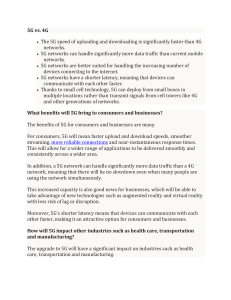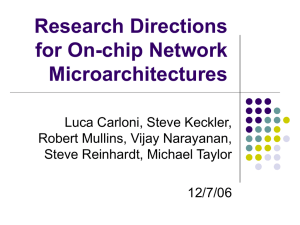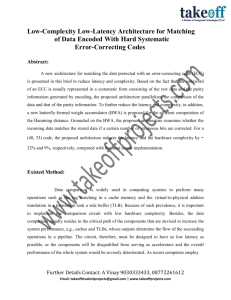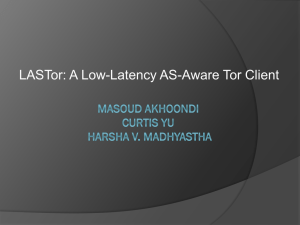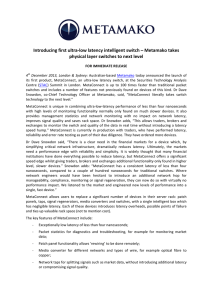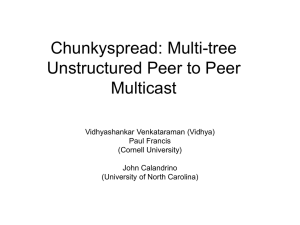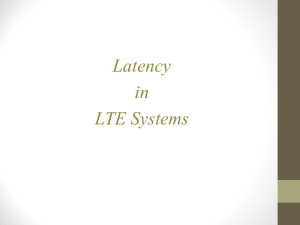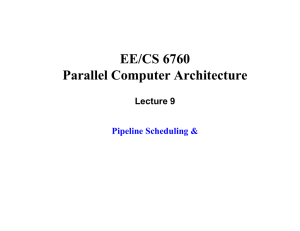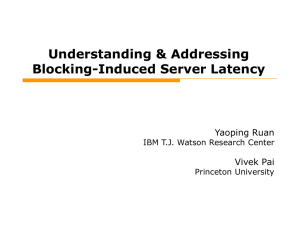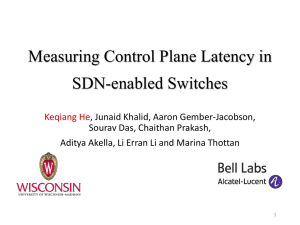Fault and Energy Aware Communication Mapping with Guaranteed Latency for
advertisement
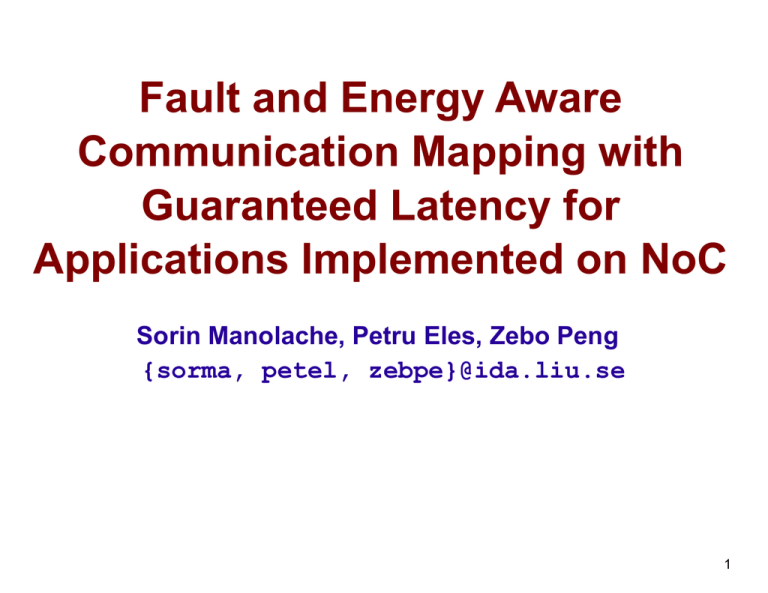
Fault and Energy Aware
Communication Mapping with
Guaranteed Latency for
Applications Implemented on NoC
Sorin Manolache, Petru Eles, Zebo Peng
{sorma, petel, zebpe}@ida.liu.se
1
Outline
Motivation
System
model
Approach
The
outline
three sub-problems
Experimental
results
Conclusions
2
2
Motivation
Reduced feature sizes non-negligible rate of transient faults on
the network links
Specified message arrival probabilities have to be guaranteed
Application latency
Application latency has to be reduced and has to be predictable
even in the case of faults
Energy consumption of communication links account for a
significant fraction of the total energy consumed by the chip
Communication energy has to be reduced
3
3
System Model
Application characteristics
Task period, WCET,
deadline, dependencies,
priorities
Message lengths and
priorities
Task mapping
Platform characteristics
Link bandwidth, energyper-bit, average failure
rate, average recovery
time
Packet size
4
4
Problem Formulation
Input: system model
Output: mapping of messages to links
Constraints:
Task deadlines are met
The probability that a inter-task message reaches is
destination is higher than a specified bound
Communication energy is reduced
5
5
Approach Outline
Link failures are tolerated by means of transmission of
redundant packet copies
How many? How to map the copies? How should we
generate the mapping alternatives such that they are
energy-efficient?
Explore the space of alternatives, select those that
minimize latency
Drive the exploration by task response time analysis
How to model the application in order to account for
packetisation and redundancy?
Exploit the maximised time slack for energy minimisation
by means of voltage scaling [Andrei et al., ICCAD 2004]
6
6
Communication Supports
7
7
Communication Supports
8
8
Response Time Analysis
9
9
Latency vs. Imposed MAP
10
10
Latency Reduction vs. Link Load
11
11
Energy vs. Number of Tasks
12
12
Conclusions
An approach to communication mapping for NoC
Guaranteed latency
Guaranteed message arrival probability in the presence of
transient link failures
Energy minimised by slack maximisation and subsequent
voltage reduction
13
13
Latency vs. Number of Tasks
14
14
Communication Supports
use CS of minimal general redundancy degree for the
given spatial redundancy degree
CS that are only temporally redundant have no capacity
for concurrent transmission of redundant copies
use CS of spatial redundancy degree higher than 1
CS of SRD > 2, composed of shortest paths only, are
vulnerable on the initial two links
If longer paths are used, in order to tolerate double faults
more energy is consumed and longer latency is
obtained
use CS of spatial redundancy degree at most 2
15
15
CS Candidate Space Exploration
CS candidates
X
X
X
…
Messages
X
X
Tabu Search
Restrict the neighbourhood
to candidates that would
move the communication to
links with lower load of
higher priority messages
Attempt to re-map the
messages with high jitters
X
16
16
